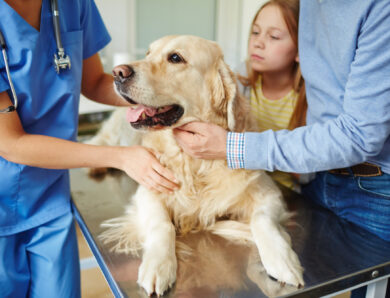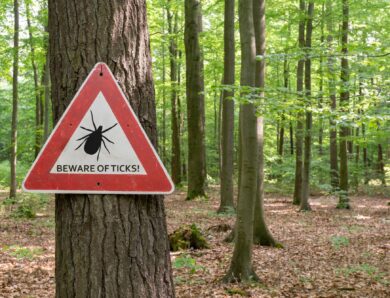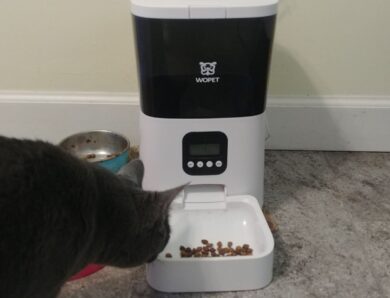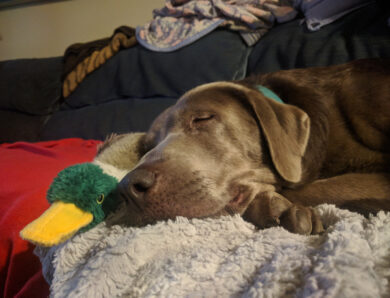
Why Does My Dog Have Dandruff?
Dandruff is a common skin condition that will likely affect your dog at some point in his or her life. And while dry skin is the number one cause of dog dandruff, there can be other, more worrisome, underlying conditions for which dandruff is simply a symptom.
Before you can figure out how to get rid of your dog’s dandruff, you’ll need to determine the cause. There are lots of simple remedies out there, but they won’t help if you’re not treating the right condition.
Some conditions can be easily diagnosed, others you’ll need to consult with your vet for. We don’t recommend waiting more than a week to see a vet if you’re unable to eliminate your dog’s dandruff on your own.
Dog Dandruff Causes & Remedies
Dry Skin
Because the number one cause of dandruff in dogs is dry skin, take a look at your environment to see if there’s anything you can change to provide an easy fix. This is particularly relevant if you have a Doberman, Dachshund, German Shepherd, or Irish Setter — all of which are breeds prone to dry skin and dandruff.
No matter what breed of dog you have, if you notice dandruff flakes every winter there’s a good chance it’s the dry, forced heat that’s messing with his skin. If you don’t already have a humidifier, consider investing in one and putting it in the room your dog spends the most time in.

Live in an arid geographic region? Find a hydrating lotion or leave-in conditioner that will keep your pup’s skin and coat shiny and moisturized.
Giving your dog a bath with a moisturizing shampoo is another great way to combat dry skin. Just don’t overdo it. Bathing your dog too frequently can strip his skin and hair of its natural oils.
And, if you normally blow dry your pup’s fur after a bath, don’t. The last thing he needs if he’s got dandruff is more hot, dry air hitting his skin.
Sunburn
Summer can also be a problem for dogs that like to be outside. Sunburn in dogs is real and can cause itchy, flaky skin. Often its more of an annoyance than anything. But it can become an issue if your dog is bothered enough to start scratching at the sunburn. Too much scratching can create open sores, putting your dog at risk for infection.
Find out how to protect your pup from sunburn.
Spring and summer can also see your dog break out with dandruff if he’s got seasonal allergies. While humans respond to pollen allergies by sneezing, dogs usually wind up scratching to try to rid their fur of the problem. Check with your vet to see if there are any allergy medications you can try.
Allergies
Noticing flakes on just one area of your dog? She might be having an allergic reaction to something. Have you changed anything in your home recently? Are you using a new dog shampoo? Washed her favorite blanket in a new detergent?
Even an allergic reaction to a new food can present as a skin problem rather than digestive.
If you think a new household product or dog food might be to blame, take it out of your day-to-day routine and wait a couple of days. Does the dandruff clear up?
Insufficient Diet
Speaking of food. Rather than an allergic reaction to a new food, your pup might be suffering from a lack of omega-3 oils in his usual diet. Check the nutrition labels on your dog’s food. Does it list fishmeal, or more specifically salmon, mackerel, or trout?
Or is the food enriched with omega-3 acids, namely DHA (docosahexaenoic acid) or EPA (eicosapentaenoic acid)?
If your dog’s preferred food is lacking in omega-3, consider switching brands or look into adding an omega-3 supplement to his diet. Always check with your vet before starting a supplement to ensure you’re using the right dosage.
Parasites
One of the more worrisome causes of dandruff is parasites. In the worst-case scenario, your dog might have a condition called Cheyletiellosis, also known as walking dandruff. Caused by Cheyletiella mites, it’s usually an easy condition to spot as you should be able to spot the mites moving around in your dog’s fur.
Most dogs with Cheyletiellosis will scratch a lot, enough so that you’ll likely find bald patches or red spots on his skin.
Cheyletiellosis is highly contagious. If you’ve got more than one dog (or also have cats), you can be pretty sure they’ve all got the mites. You might have them too.
You’ll need to work with a vet to treat Cheyletiellosis, and a special dip will be required for all your pets. You’ll also need to do a thorough cleaning of your home to rid your linens and furniture of the mites.
Flea and lice bites can also cause skin irritation that can present as dandruff. A vet will be able to help diagnose any parasite-based dandruff.
To help prevent parasite-based dandruff, you should regularly brush your dog. Matted hair is an excellent breeding ground for parasites. Plus, regular brushing gives you a better chance of spotting any issues before they get too bad.
Skin Conditions & Disease
Dandruff can also be a symptom of certain underlying health conditions like, hypothyroidism and Cushing’s disease. Skin infections, both bacterial and fungal, can also cause dandruff as can issues like yeast infections.
You’ll need a vet to treat all of these, so don’t delay. If you haven’t been able to alleviate your dog’s dandruff within a week, make an appointment for your pup right away. Not only will be you be improving your fur baby’s quality of life, you might be saving it.





